April 25 is celebrated as National DNA Day, in commemoration of the day in 1953 when James Watson, Francis Crick, Maurice Wilkins, Rosalind Franklin and colleagues published papers in the journal Nature on the structure of DNA.
We know more about genetics and DNA now than ever before. Researchers are studying the genetic code of everything from horseshoe crabs to gut bacteria. Most high school students can give you a tolerably accurate definition of a gene. And the acronym DNA is so commonly understood to mean the molecule of life that newspapers don’t bother to define it. But less than a century ago, no one knew what deoxyribonucleic acid was and barely anyone understood much about genetics.
Some researchers in Storrs, however, were studying genetics as long ago as 100 years – before genetics was a thing and indeed, before UConn was known as the University of Connecticut. The school that started out as Storrs Agricultural School was the first in the nation to establish a genetics department in higher education. Today, researchers in diverse disciplines at several different sites that make up the University look at genetics from many different angles.
Thanks to some historical digging by Anthony Sposato, an undergraduate in molecular and cell biology who wrote up a detailed history, we now have a pictorial guide to the early days of genetics in Connecticut.

Alfred F. Blakeslee became the school’s first true geneticist when he accepted a professorship in 1907. He was especially interested in plants in the genus Datura, such as jimson weed, because he considered it “the very best plant with which to discover the principles of heredity.” In particular, Blakeslee discovered that plant chromosomes don’t necessarily follow the same rules as animal chromosomes. Cells intended for sexual reproduction (the plant equivalent of eggs and sperm), for example, can have more than one set of chromosomes and still create viable offspring. He also offered one of the first college genetics courses in the U.S., in 1913. The next year, the school decided it was so important they made the class required for juniors.


Blakeslee had a love for all things bell-curved. In 1914, he took a picture of 175 students (all men) lined up by height, which resulted in a classic normal distribution. Molecular and cell biology professor Linda Strausbaugh recreated the photograph 80 years later, but this time with both men and women. The two photos still appear in almost every basic genetics textbook.
Jimson weed might have been the perfect plant with which to study heredity, but the Connecticut Agricultural College’s second geneticist of note preferred poultry.
Leslie Clarence Dunn joined the Storrs Agricultural Experiment Station in the 1920s, and immediately began working with chickens. He learned that most individual characteristics are determined by complex interactions between many genes, and possibly other factors, such as the environment. This conviction influenced him to campaign against eugenics, which at that time was very closely connected to genetics.
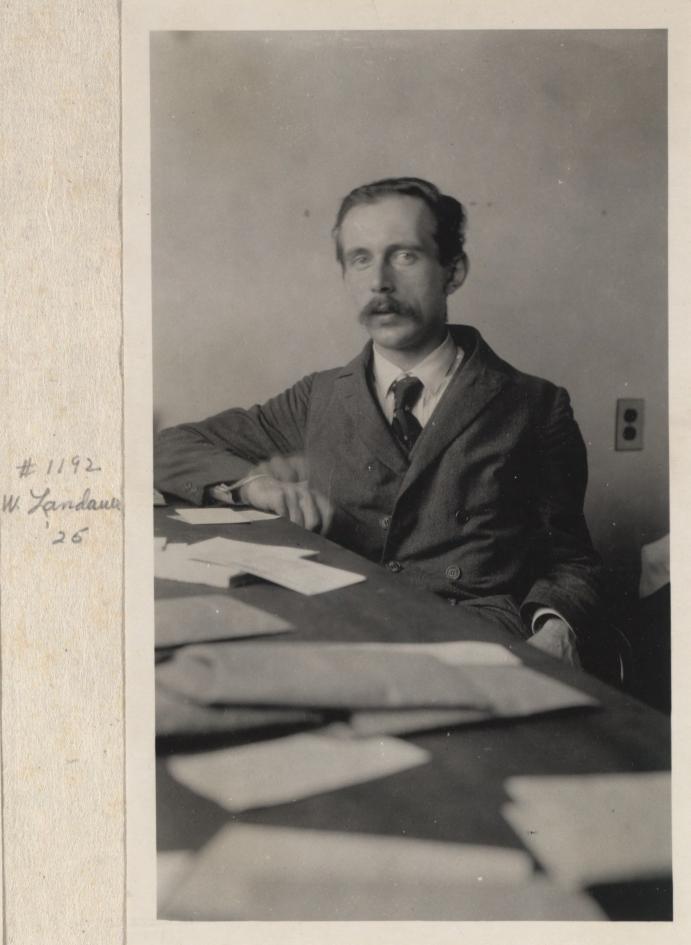
Both L.C. Dunn and Walter Landauer, his research assistant (and future head of the Department of Animal Genetics), denounced the idea that one can improve the human race by careful selection of those who mate and produce offspring. Eugenics, they believed, discredited the science of genetics by association. Dunn eventually published a book on the subject.
Human rights were not the only passions UConn’s geneticists have pursued. Edmund Ware Sinnott, who taught genetics at the Connecticut Agriculture Station from 1916 to 1928, was an artist and philosopher in addition to his study of the genetics of cucurbits, the plant family that includes cucumbers, squash, and gourds.
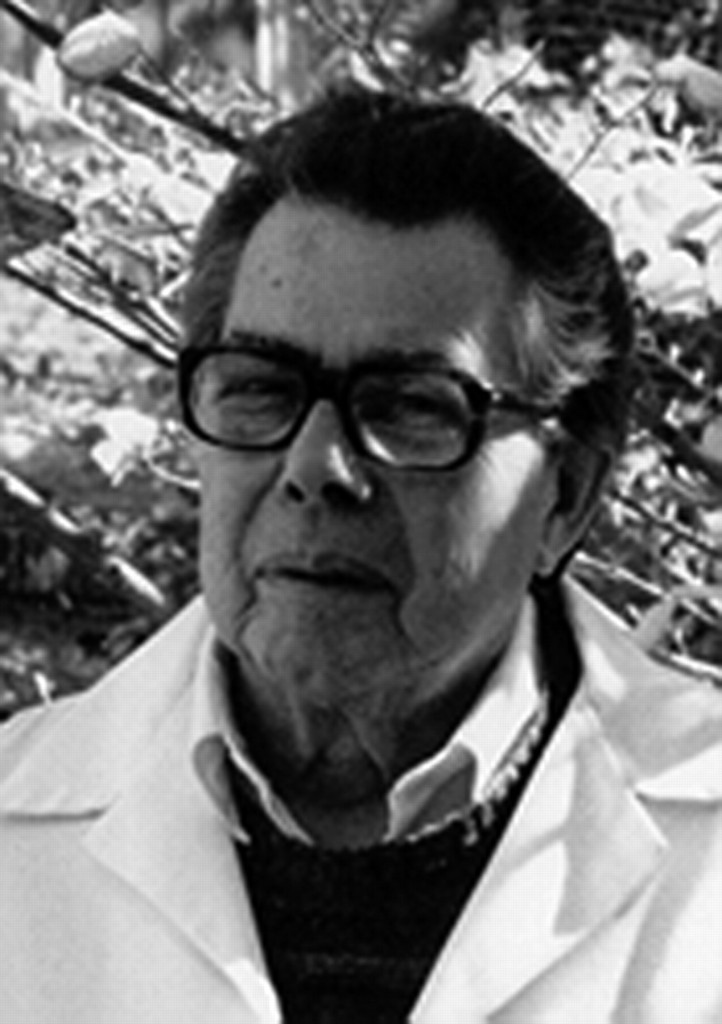
Modern students of genetics are all familiar with Drosophila melanogaster, the common fruit fly. They can thank UConn biologist Arthur Chovnick for that.
Chovnick did pioneering research into fruit fly genetics, and eventually became head of the biology department. Chovnick’s insight and opinions were sought after by researchers around the globe, including Nobel laureates. One night his daughter answered the phone and heard a man claim he was Francis Crick. She hung up, thinking it was a joke, but it wasn’t – it truly was Crick, one of the scientists who discovered DNA. Chovnick retired in 1994, but remained active in research for the rest of his life.
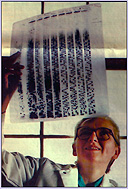
Claire Berg joined UConn in 1968. Her work focused on transposons, jumping genes that move around the genome. Not only did she make basic discoveries on transposons, she also created an innovative gene sequencing method using a transposon-containing vector, pDUAL. In addition to her research, Berg was active in recruiting women into the study of biology, which was heavily dominated by men at the time. Berg’s legacy continues with the Clare M. Berg Graduate Fellowship in Genetics, a summer fellowship for female graduate students at UConn.

Another prominent geneticist at UConn, Linda Strausbaugh, pioneered forensic research at UConn and was a member of a team which revealed that remains thought to belong to Adolf Hitler were in fact from a young woman.
“At UConn, I got interested in more diverse areas: jumping genes, repeated DNA and repeated gene families. And ways we could use these genes as markers for speciation and relatedness. Later on this led to an interest in forensics,” Strasbaugh says. She established the Professional Master’s Program at UConn through an award from the Alfred P. Sloan Foundation. Now a professor emerita, she still has active research collaborations and is on the board of directors of the National Professional Science Master’s Association.
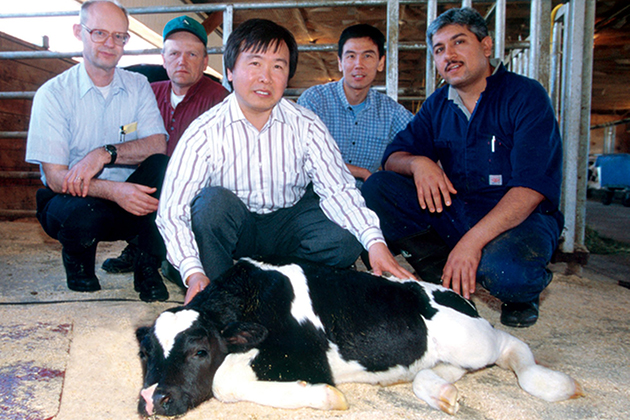
No history of genetics at UConn would be complete without Jerry Yang and Amy, the first farm animal cloned in the U.S. and first cloned cow in the world. Yang was born in Communist China and surmounted many difficulties to become a geneticist. His first academic position in this country was at Cornell University, but his name was made at UConn. After joining the University, he succeeded in cloning an animal, a cow named Amy, born in 1999. Amy and successive clones created by Yang helped to dispel doubts about the health and longevity of clones, and prove to the Food and Drug Administration that cloned animals are safe to eat.
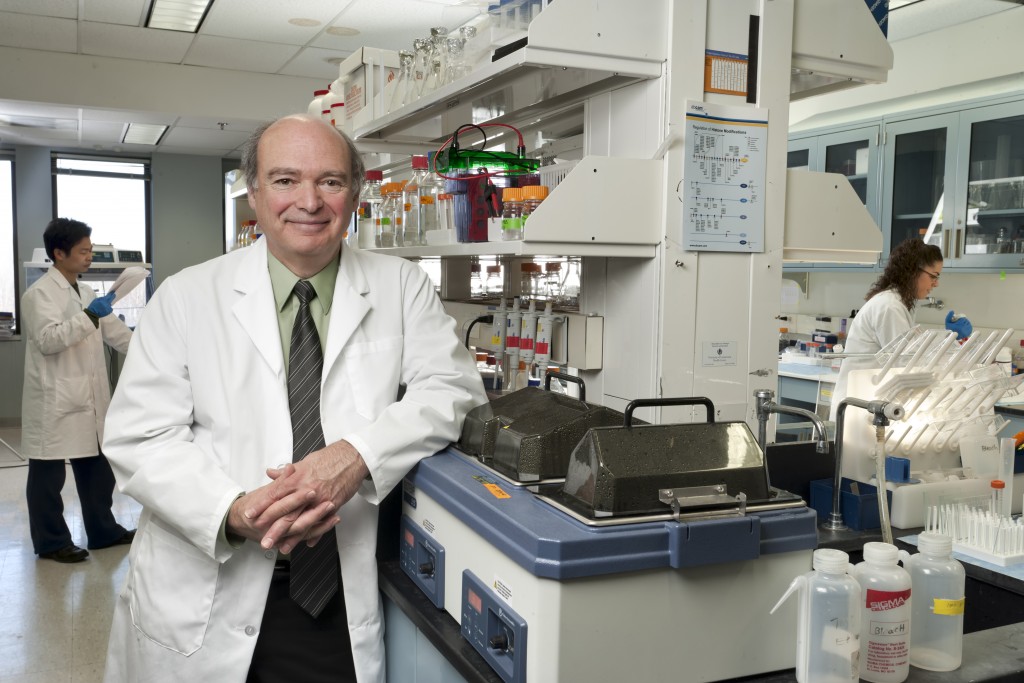
Now, a century after the first genetics research began at UConn, the University is home to the Institute for Systems Genomics, whose mission is to “promote world-class research and training in genomics and personalized medicine.” No longer is genetics the study of a single department. Faculty pursue genetics research in both human and animal medicine, microbiology, ecology, agriculture and nursing. The work of nearly 100 researchers at the flagship campus, UConn Health, and the Jackson Laboratories, exemplifies the interdisciplinary nature and extraordinary potential of modern genetics research.



